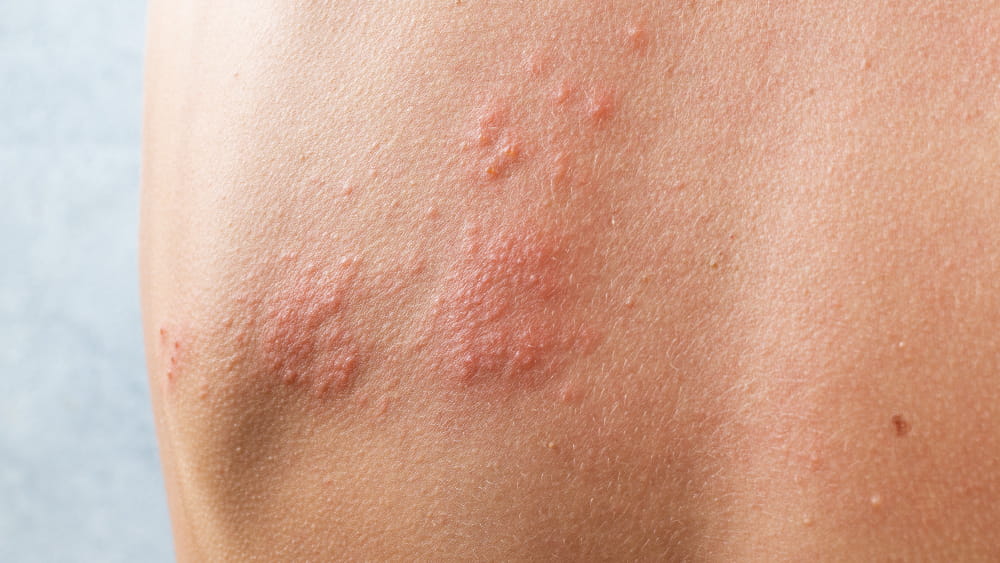
Often described as painful and frustrating, shingles is a virus that no one wants to get. Shingles is characterized by painful rashes on the skin, usually on the face or torso, accompanied by sharp, radiating nerve pain.
Unfortunately, one of every three people will develop shingles in their lifetime, according to the CDC. Anyone – from children to older adults – can get shingles, although it is more typical in adults over 60.
Maryrose Laguio-Vila, MD, is an infectious disease specialist with Rochester Regional Health and answers many of the common questions about shingles – including how to identify it, what the symptoms are, and how what treatments are available to treat shingles.
Shingles is caused by the same virus that causes chickenpox: varicella zoster virus (VZV). People who had chickenpox as children and recovered from it still have inactive VZV in their bodies. Someone first needs to have chickenpox in order to develop shingles.
As a person ages, their natural immunity to VZV declines, increasing the chances of developing shingles. People taking immunosuppressant or immunomodulatory medications are also more prone to developing shingles, as are people who had chickenpox before age 4, according to research. Most people will only have shingles once in their lifetime, although in rare cases, it can occur more than once.
Symptoms of shingles usually start with pain, itching, or tingling of a person’s skin, followed by a painful rash of blister-like sores. The rash is usually located on one side of the person’s torso or face. Other symptoms might include:

There are 4 stages of shingles: initial pain, rash, blisters, and scabbing.
In all, a case of shingles lasts approximately 2-6 weeks.
Shingles is contagious, but only for people who have never had chickenpox or people who did not receive the varicella (chickenpox) vaccine.
The virus that causes shingles can spread through direct contact with fluid from shingles blisters, or by breathing in viral particles from the blisters. If someone does become ill from the virus, they will develop chickenpox – not shingles.
Roughly 10-18 percent of people who develop shingles will live with long-term postherpetic neuralgia (PHN) after the rash and blisters go away. PHN can last for months or even years for some people. Patients under the age of 40 rarely develop this type of pain.
Some patients with shingles on their face near their eyes may experience serious vision complications, including vision loss. In very rare cases, hearing loss, brain inflammation (encephalitis), or pneumonia might occur.
“If someone has one of more of the symptoms of shingles, they should contact their primary care provider immediately so they can begin treatment as quickly as possible,” Dr. Laguio-Vila said. “This will not only limit the chances of potential complications, but also provide relief from the pain.”
There is no immediate cure for shingles. Patients with shingles often need multiple forms of treatment to stop the virus from spreading further and to ease the pain and itching of the rash and blisters.
There are several forms of antiviral medication that limit the severity of the illness and how long it lasts, including acyclovir, valacyclovir, and famciclovir. Primary care providers will consult with patients to ensure they are taking the right medication.
For pain, shingles patients can take Tylenol or Advil, or place cool, wet compresses or lidocaine patches onto the rash. Calamine or hydrocortisone lotions can help to relieve itching and dry out the rash, as well. More severe pain can be treated using neurological medications such as gabapentin, pregabalin, or tramadol.
Wearing loose-fitting clothing can help prevent unnecessary pain from fabric brushing against the rash.
The most effective way to avoid contracting shingles is to get the shingles vaccine Shingrix. The CDC recommends the one-time, two-dose vaccine for adults ages 50 and older, as well as those ages 19 and older who have compromised immune systems. Shingrix is 97 percent effective against shingles for people ages 50-69 and 91 percent effective for people ages 70 and older.
To avoid spreading the virus to others, shingles patients should cover their rash and/or blisters and try not to touch or itch it. Frequent hand washing is important, as it kills viral particles that could infect others.
“Shingles is very painful and, unfortunately for some patients, symptoms can linger” Dr. Laguio-Vila said. “Following your primary care provider’s directions for treating the virus by taking medication properly and avoiding people who are at risk for contracting shingles can go a long way toward easing the pain from shingles and preventing others from getting sick.”
